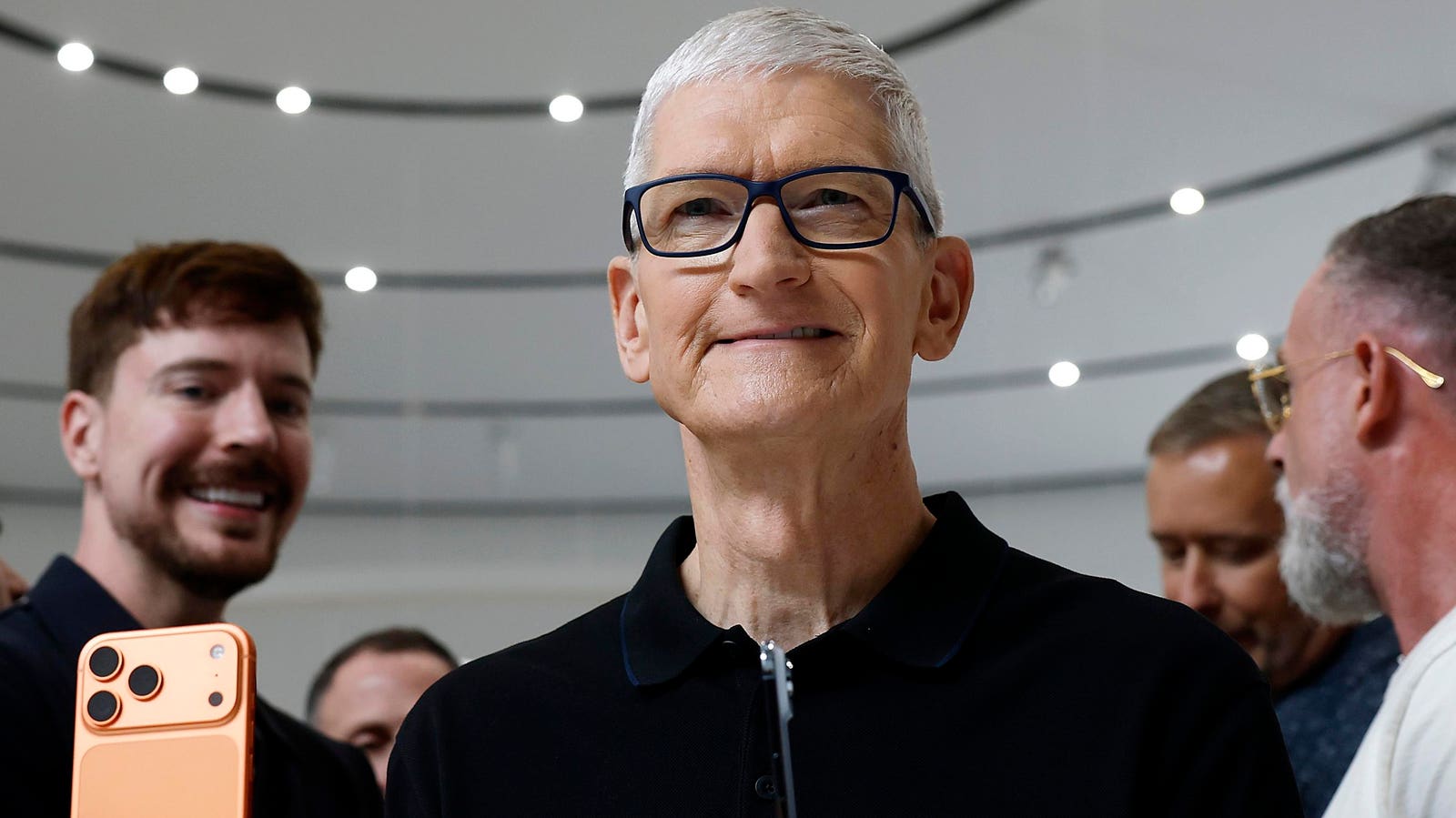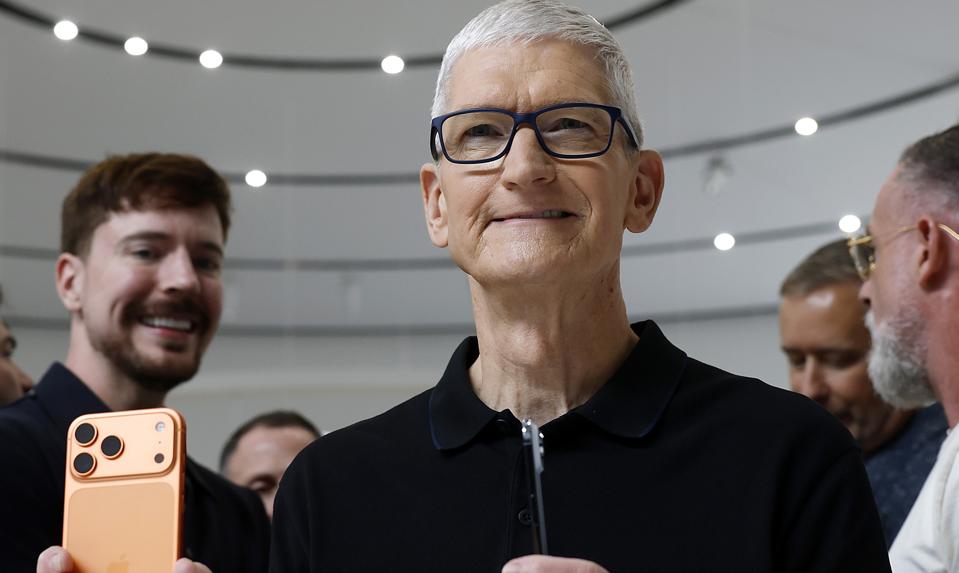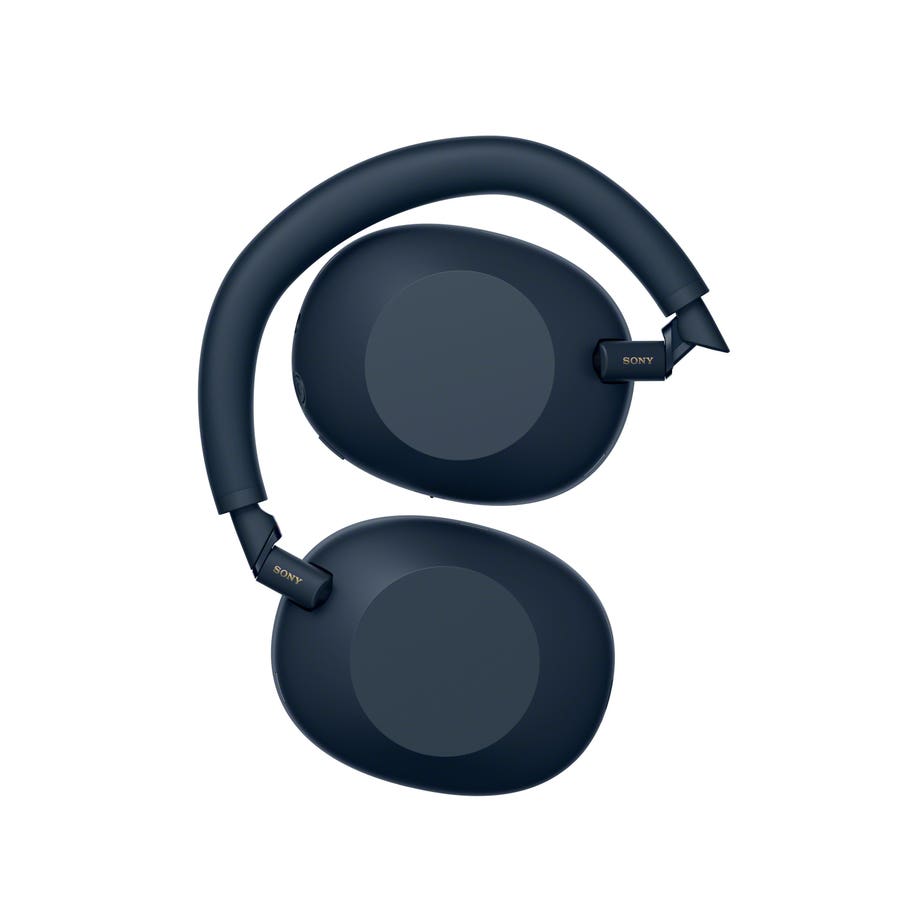Do nort click the crypto link.
Getty Images
After all the hype, Apple’s iPhone 17 has now been revealed, with the all new Air and Pro models garnering most of the attention. But hundreds of thousands of viewers tuning in to Apple’s live steam got more than they expected — and not in a good way.
“Scammers exploit the hype around major tech events to target viewers,” Guardio’s security team told me, as “several fake YouTube live streams” broadcast “deepfake videos of Tim Cook” at the same time as Apple’s live event.
Unsurprisingly, this was a crypto scam with a malicious QR code on screen. “You scan it with your iPhone,” the fake Tim Cook explained,” and instantly you interact with a contract that cannot be altered, cannot be corrupted, and cannot be reversed. That is Apple’s promise. Security, simplicity and empowerment all in one.”
Scanning the QR code on screen directed to malicious websites promising to “double your crypto”. At one point, more than 200,000 viewers were watching the stream.
With perfect timing, the FBI has just released its latest deepfake warning, helping citizens identify real from fake videos — does the person you think you know blink too much, have blurry edges” Do their teeth look real? Is the audio in sync?
This Tim Cook fake was a perfect example of how easily an attack can fake a brand, impersonate a well-known individual and perpetrate a scam. All by using legitimate infrastructure — in this case YouTube — to reach as many people as possible.
The scams don’t persist for long. Videos are pulled down and domains are blocked. But often it’s not long the attackers need to generate a return, before moving onto the next.
If you came across these deepfake videos and clicked through, if you provided any financial or other information or logged into a sign-in page, then change your passwords. You should also check your financial accounts for any unusual activity.
And never click any links — including QR codes — unless you’re sure they’re real.
I have reached out to Apple for any comments on this.









